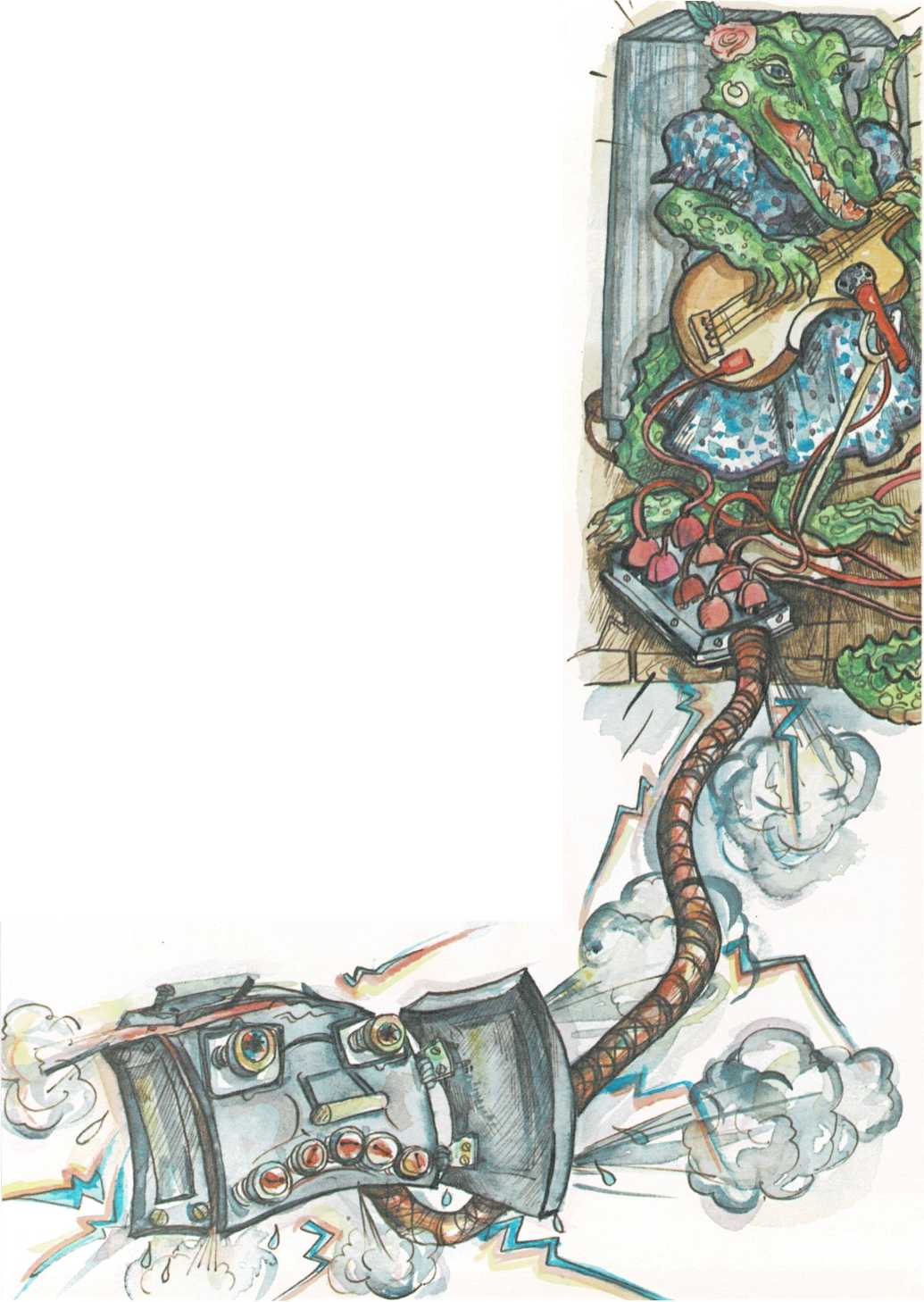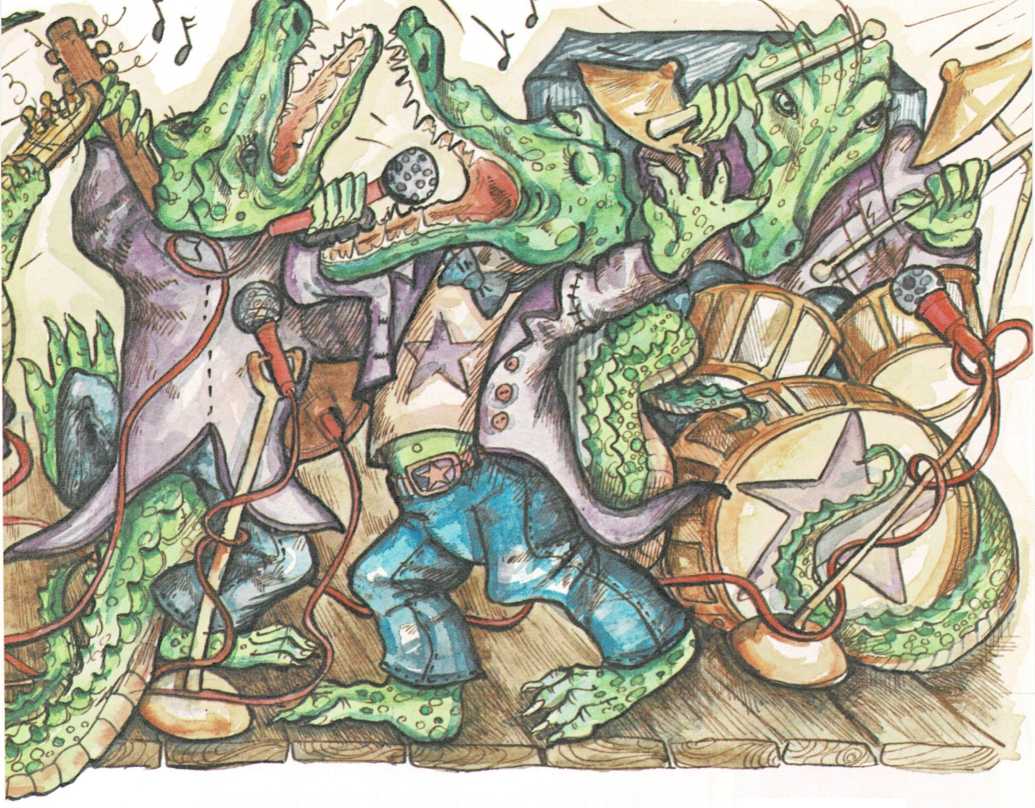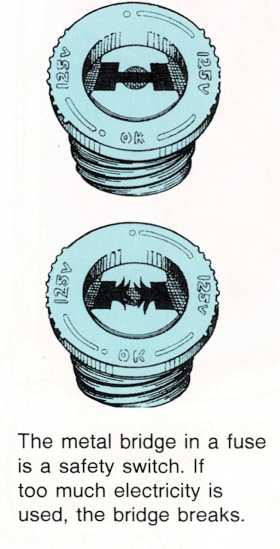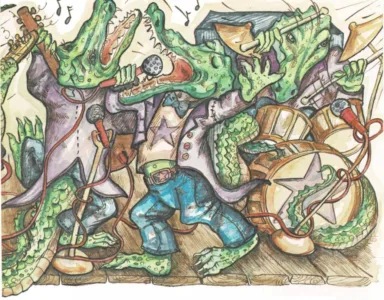
Making electricity safe
A light bulb uses only a little electricity. But electric stoves,
refrigerators, and frying pans use as much electricity as dozens of
light bulbs. Can you use too much electricity? What happens if you do?
Too much electricity traveling through a wire makes the wire hot—and a
hot wire can be dangerous. It can start a fire. But a special safety
switch in your house stops the electricity before the wire heats up.
One kind of safety switch is a fuse [(fyooz).]{.smallcaps} A fuse
contains a thin metal bridge that the electric current crosses on its
way through the wire.
If too much electricity is used at once, the metal in the bridge heats
up. Before the wire can get too hot, the bridge melts and breaks. When
this happens, we say that the fuse has \”blown.” The electric current is
stopped and the wire stays cool.
Another kind of safety switch is a circuit

breaker [(suhr]{.smallcaps} kiht [bray]{.smallcaps} kuhr). Instead of
melting, a circuit breaker turns itself off.
One kind of circuit breaker contains an electromagnet. As more current
is used, the electromagnet pulls harder. If too much current flows
through the wire, the strong pull opens the switch. This stops the
electric current before the wire can heat up.
Of course, the fuse can be replaced, or the circuit breaker can be
reset, to turn the electricity on again. But first, some of the electric
things you are using must be turned off. Then you will be sure you are
not using too much electricity.


